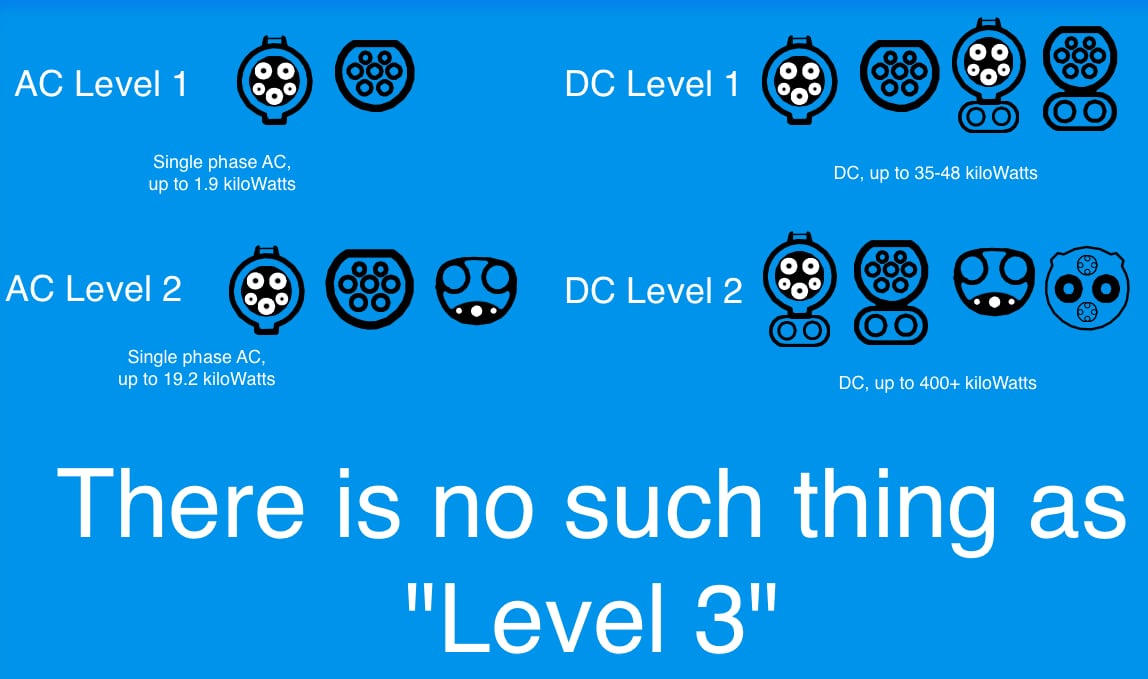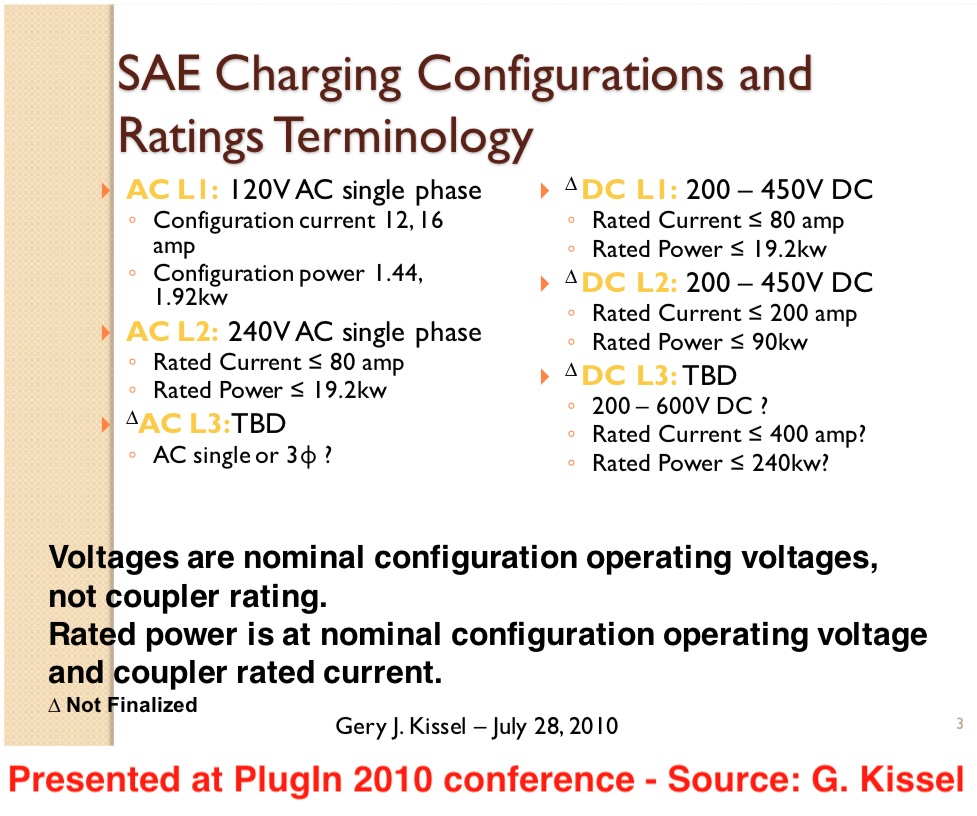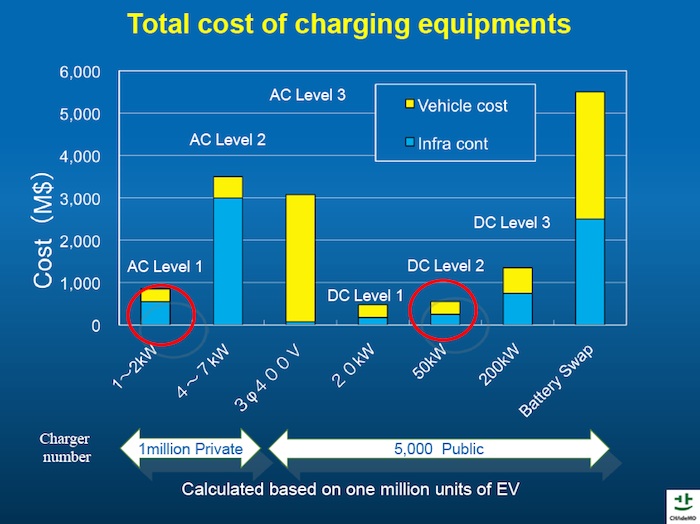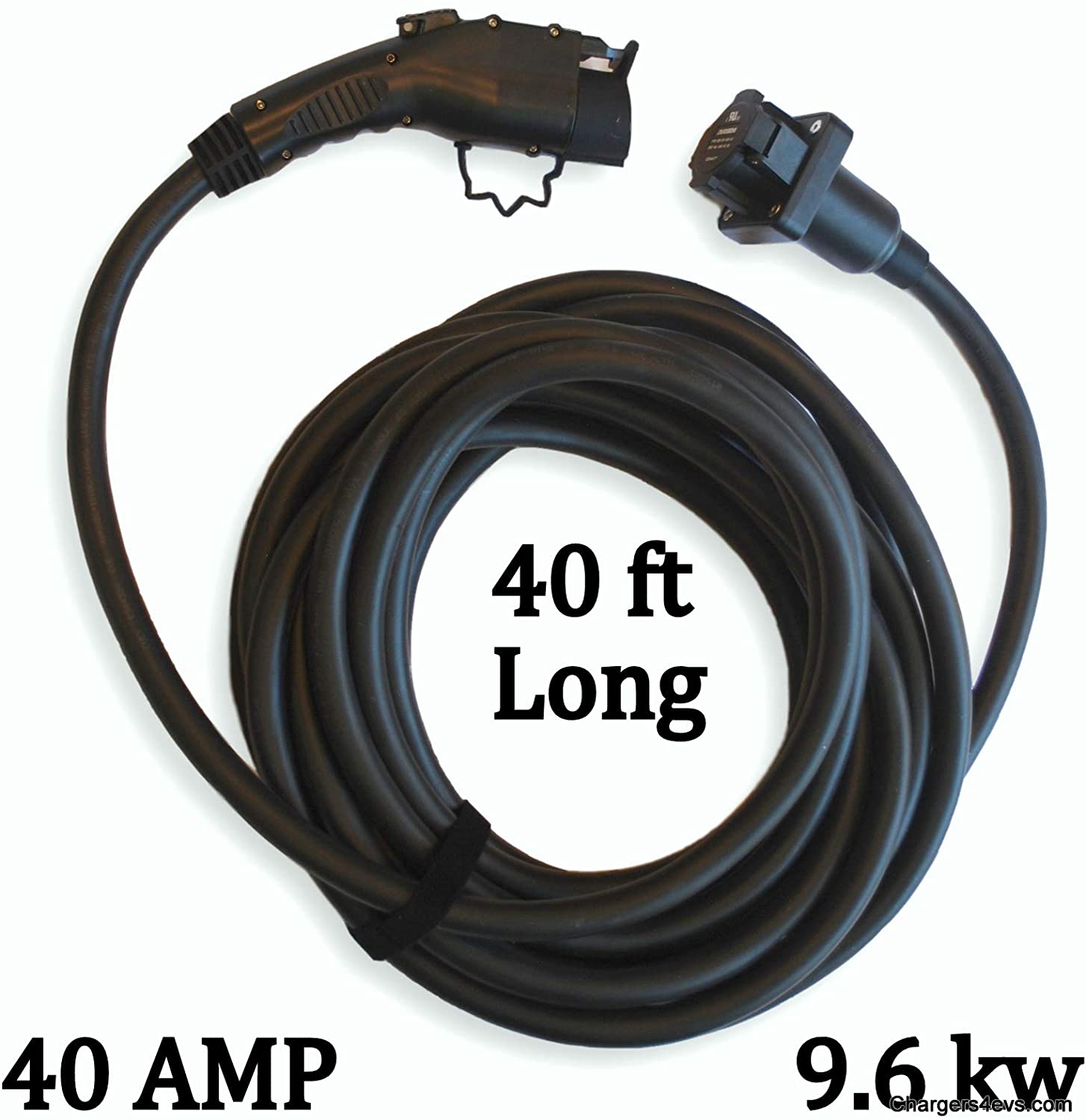Last Update: November 12, 2019

Proper terminology usage may seem boring. Improper terminology usage can lead to arguments, misunderstanding, and in some cases wars. Therefore it's useful to use the correct terms so we understand what each other is saying when we talk about electric car charging.
What's widely understood by electric car drivers is that "level 1" means 120 volt charging at up to about 1.9 kiloWatts, "level 2" means 240 volt charging at up to about 19.2 kiloWatts, and then "level 3" means DC fast charging. But "level 3" (a.k.a. DCFC or DCQC) was never properly standardized by the Society for Automotive Engineers, and it seems at different points of time the SAE had different meanings for these phrases. Additionally folks outside North America may not have adopted the "level 1/2/3" phrase at all.
SAE's "Level 1/2/3" Terminology
The Society of Automotive Engineers (SAE) is a standards agency overseeing the Automotive Industry. For electric car charging, the SAE convened a committee called "J1772". You may have heard of the "J1772 plug", which some call a "J-Plug", so now you know where the name came from. One thing the J1772 committee developed is this terminology table
| AC Charging Systems | DC Charging Systems |
|---|---|
| AC Level 1: 120 volt single phase AC up to 16 amps, for up to 1.9 kiloWatt charge rate. Typically this is limited to 12 amps. | DC Level 1: 200-450 volts DC up to 36 kiloWatts (80A) |
| AC Level 2: 240 volt single phase AC up to 80 amps, for up to 19.2 kiloWatt charge rate. Typically this is 32 amps. | DC Level 2: 200-450 volts DC up to 90 kiloWatts (200A) |
| AC Level 3: More than Level 2. A couple car makers make cars supporting three phase AC charging at rates up to 43 kiloWatts. | DC Level 3: 200-600 volts DC up to 240 kiloWatts (400A) |
In the background information below we learn that SAE never finalized the "level 1/2/3" terminology for AC Level 3, nor for the DC levels. On
Wikipedia it's noted that in Edition 7 of the J1772 document (published 2017) an appendix contains this statement: "AC Level 3 charging has never been implemented. The following is historical information for reference only. - J1772 (2017)" The same Wikipedia page does not discuss DC levels 1/2/3 at all.
In other words, while the "level 1/2/3" phrase was meant by SAE engineers to be useful by many people including automotive engineers talking with other engineers, they never finalized the precise meaning of the phrase. Further, outside the USA the phrase is not in broad use.

In
There is no such thing as a Level 3 EV charger, Prof. Kelly talks about the current state of this terminology. Instead of the "AC/DC Level 1/2/3" terminology originally planned, there is now only levels 1 and 2.
Maybe we - the regular folks who don't have PhD's in automotive science - maybe we should stop using those phrases since they don't help?
IEC 62196 - Europe's terminology
The European standards-setters gave us a similar-but-different set of terms
- Mode 1 - slow charging from a regular electrical socket (single- or three-phase)
- Mode 2 - slow charging from a regular socket but with some EV specific protection arrangement
- Mode 3 - slow or fast charging using a specific EV multi-pin socket with control and protection functions (e.g., SAE J1772 and IEC 62196)
- Mode 4 - fast charging using some special charger technology such as CHAdeMO
The mode 2 and mode 3 phrases refer to normal EVSE's. An EVSE (Electric Vehicle Service Equipment) is more commonly called a "Charging Station". The important feature is that built-in to the EVSE is protection circuitry so that electrical accidents are extremely extremely unlikely.
The mode 4 phrase refers to DC fast charging using cables not defined by the SAE or IEC. This includes CHAdeMO and Tesla's North America Supercharger cable.
The mode 1 phrase refers to directly connecting an electric car to a regular power outlet using something like an extension cord. This is not safe since there is no protection circuitry preventing accidents. No automaker implements that capability.
How should we use these terms?
The terminology above is what the Society of Automotive Engineers decided. It wants to be a nice precise system useful in discussion between engineering organizations. For us, the people in the street chatting informally, what's the best phrasing to use?
Let me offer these phrases that are already close to common usage.
| Phrases | Discussion |
|---|---|
| Level 1 or Trickle Charger or Opportunity Charger | These describe the line-cord charger that's sold with plug-in electric cars. These phrases are commonly used, and are very descriptive. |
| Level 2 or Normal Charging | Describes the typical AC 240 volt charging station that, as of December 2015, typically support up to 6 kiloWatt charging. These phrases are commonly used, and are very descriptive. |
| DC Fast Charge (DCFC) or DC Quick Charge (DCQC) or Supercharger | Describes the fast charging stations. "Supercharger", since it's a Tesla Motors Trademark, should of course be limited to their infrastructure. These phrases are commonly used, as are the abbreviations, and are very descriptive. |
| DC Ultra-Fast Charge | The manufacturers are starting to roll out systems with much higher charging rates, with 350 kiloWatts starting to be available. There is a significant difference once one gets to that charging rate, so it probably needs its own phrase. |
| AC Fast Charge | In Europe there are two cars directly supporting three phase AC fast charging. This phrase is very descriptive of, well, an AC fast charging system. It should be used for any system supporting AC charging above 20 kiloWatts. |
Notice that I'm not suggesting the Level 3 phrase in any of these. Currently usage of the Level 3 phrase refers to DC Fast Charge systems. However, I find Level 3 imprecise and causing confusion.
The phrase "DC Fast Charge" can describe all DC fast charging rates, possibly. Or maybe we need to say "DC Ultra-Fast Charge" for the newer systems that run at 250 kiloWatts or 350 kiloWatts or more? There is a significant difference between 50 kW, 100 kW, and 350 kW, and maybe the terminology needs to reflect that difference?

In the wild we see labels like this - Fast AC or Fast DC. That's a clue about the sort of phrases we use to describe charging speed.
Historical basis for "Level 1/2/3"
The phrase "level 1", "level 2" and "level 3" did come from a legitimate source. The Society for Automotive Engineers (SAE) J1772 committee used this terminology, and may still do so.

At the PlugIn 2010 conference in a session titled Near Future Charging, Gery Kissel presented this chart telling us the SAE J1772 committee was now using these definitions for "level 1" etc. Mr. Kissel was at the time Chairman of the J1772 committee.
At that time the terminology had not been finalized, as is noted for several of the entries.

In the same session this was presented attempting to demonstrate the cost and advantage of different charging levels. Note how it uses the "AC/DC level 1/2/3" terminology.

At some point SAE International presented this chart giving more precise definitions of the charging levels. Again in this chart many of the items are marked as not finalized.




